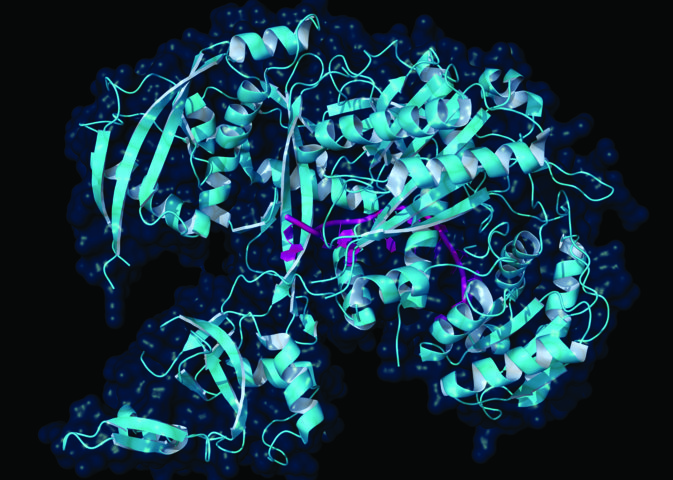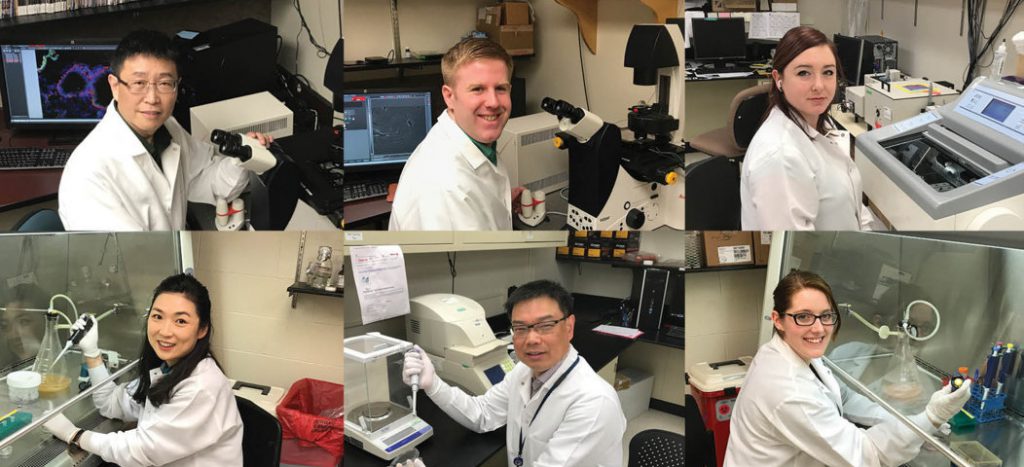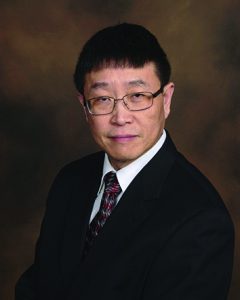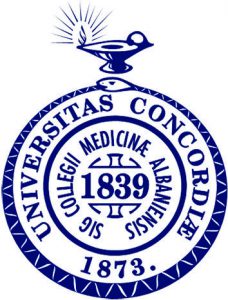Professor Dale Tang – Unravelling the Mystery of Chronic Asthma
Understanding the underlying processes that contribute to the progression of asthma is essential to improve our limited knowledge of the disease, and to assist in the generation of novel therapies. Professor Dale Tang and his team in the Department of Molecular and Cellular Physiology at the Albany Medical College in New York are pioneers in a new arena of research investigating the potential role of smooth muscle proteins in the development of airway hyperresponsiveness and airway remodelling – prominent characteristics of chronic asthma.
A Commonplace Enigma
The seriousness of asthma is widely appreciated – with nearly 300 million people affected globally. It is one of the most common diseases of the respiratory airways and although its onset is predominantly in childhood, it occurs in individuals of all ages and ethnicities regardless of socioeconomic status. However, despite its significant impact on the population, chronic asthma is still considered an unmet need, with many sufferers struggling to successfully manage their symptoms.
Professor Dale Tang, a renowned researcher with a broad background in physiology, molecular biology, cell biology, and biochemistry, was initially drawn to the field of asthma research when he was a medical student at Tongji Medical University in Wuhan, China. ‘I saw an asthmatic patient who was coughing and wheezing,’ he tells us. ‘We gave him medications, but he did not respond very well. My attending physician told me that our understanding of asthma is limited and we do not have many medications to treat this disease – this is one of the major reasons that attracted me to this field.’

‘We are the first to discover that c-Abl tyrosine kinase regulates smooth muscle contraction by controlling structural changes in the cell’
Asthma is a dynamic disease that changes over time. Knowledge of the cellular processes that underlie its development – or pathogenesis – is surprisingly limited. Indeed, scientists are still striving to accumulate fundamental data that can be used to enhance our understanding of the mechanics that drive disease progression.
The Role of Smooth Muscle
Much of the musculature of internal organs and the digestive system is lined with smooth muscle, a non-striated muscle that lacks voluntary control. Together with the airways and the lungs, smooth muscle makes up a major part of the respiratory system. Moreover, the contraction of smooth muscle lining the respiratory airways plays an essential role in regulating the functions of the respiratory system. During breathing, the mechanical process of oscillation works to overcome the resistive and elastic properties of the lungs and chest wall. This mechanical stretch of the airways results in the contraction of smooth muscle by inducing the tensing and relaxing of smooth muscle cells (myocytes).

Recent evidence has shown that the action of smooth muscle contraction is compromised in asthma. ‘We know that abnormal airway smooth muscle contraction causes breathing difficulty in asthmatic patients, but the mechanisms that control airway smooth muscle contraction are not fully understood,’ says Professor Tang.
It is well known that asthma is characterised by airway hyperresponsiveness, airway remodelling, mucus hypersecretion, and airway inflammation – all of which lead to impaired respiratory airflow. Considerable information exists about the development of mucus hypersecretion and airway inflammation, however less is known about the mechanisms of airway hyperresponsiveness and airway remodelling. Both of these processes are largely attributed to increased airway smooth muscle cell contractility and proliferation. Funded by a grant from the National Institute of Health, it is the aim of Professor Tang and his team, Research Associate Guoning Liao, PhD student Brennan Gerlach, Senior Research Technicians Olivia Gannon and Alyssa Rezey, Laboratory Manager Ruping Wang and Postdoctoral Fellow Jiaoyue Long, at the Albany Medical College in New York to investigate the mechanisms that control smooth muscle cell proliferation and migration, and determine their role in the possible pathogenesis of airway remodelling in asthma.
Properties of the Actin Cytoskeleton
Within the body’s cells exists a complex network of interlinking tubules and filaments known as the cytoskeleton – a structure that has a myriad of functions including giving the cell shape and providing mechanical resistance to prevent deformation of the cell. The cytoskeleton also participates in the regulation of contraction, thereby distorting the cell and its environment, and allowing the cell to migrate. The filaments that comprise a chief component of the cytoskeleton are constructed from a globular protein called actin. Along with myosin – a molecule capable of generating force – the actin cytoskeleton occupies a substantial proportion of the cytoplasm within smooth muscle cells and forms the apparatus that allows the entire smooth muscle to contract. Professor Tang and his team were the first researchers to propose that smooth muscle contraction is similar to the moving of a car, with myosin functioning as an ‘engine’ for smooth muscle contraction and the actin cytoskeleton serving as a ‘transmission system’ in smooth muscle.
A number of protein kinases – enzymes capable of chemically modifying other proteins – have been reported to regulate actin cytoskeleton activity in smooth muscle, including Abelson (c-Abl, Abl) tyrosine kinase, p21-activated kinase (PAK), focal adhesion kinase (FAK), and integrin-linked kinase (ILK). The long-term goal of Professor Tang’s research is to unveil the mechanism of these actin-associated proteins in airway smooth muscle contraction and determine their role in the pathogenesis of asthma.
c-Abl Tyrosine Kinase – a Key Player in Asthma Development
Initial investigations conducted by Professor Tang and his team have focused on c-Abl, a non-receptor tyrosine kinase that is widely expressed in cell cytoplasm and necessary for smooth muscle force development. Results from pilot studies in human airway smooth muscle cell cultures show that the silencing of c-Abl in airway smooth muscle significantly inhibits actin cytoskeleton dynamics, diminishing contractile response and inhibiting smooth muscle cell proliferation. These findings, explains Professor Tang, are the first evidence that c-Abl is a crucial component of the cellular processes that regulate activity of the actin cytoskeleton and a key player in regulating airway smooth muscle contraction and cell proliferation.
In order to identify the role of c-Abl in the development of asthma, Professor Tang and his fellow researchers went on to conduct studies in airway smooth muscle cells taken from patients with severe asthma and animal models mimicking allergen-induced asthma in humans. Interestingly, results from these studies revealed that the level of c-Abl was significantly higher in asthmatic cells than in normal cells. This discovery is of noteworthy relevance when considering airway hyperresponsiveness – increased sensitivity that stems primarily from hyperreactivity of airway smooth muscle. Conditional knockout of c-Abl – a technique involving the elimination of the gene encoding c-Abl in smooth muscle – was found to reduce airway smooth muscle hyperreactivity in vitro and lessen airway resistance in mice sensitised and challenged by an allergen. Further studies in animal models of chronic asthma encouragingly supported this finding, with substantially lower airway resistance and lower contractile response being observed compared to control models.

Increased expression of c-Abl in smooth muscle was also found to contribute to the development of airway remodelling in chronic asthma. The pathogenesis of airway remodelling involves a number of factors: the formation of excess fibrous connective tissue (fibrosis), enhanced accumulation of extracellular matrix protein, epithelial injury, airway smooth muscle growth (hypertrophy), and proliferation of airway smooth muscle cells.
The team also found that conditional knockout of c-Abl led to a reduction in smooth muscle mass and diminished cell proliferation markers, while treatment with pharmacological c-Abl inhibitors was found to have similar effects. Thus, Professor Tang and his team have confirmed that c-Abl is required for smooth muscle cell proliferation and increased expression of c-Abl in smooth muscle may contribute to the development of airway remodelling in chronic asthma. ‘We are the first to discover that c-Abl tyrosine kinase regulates smooth muscle contraction by controlling structural changes in the cell,’ says Professor Tang. ‘Disruption of this kinase inhibits asthmatic symptoms in animal studies. Thus, this kinase may be a new biotarget for the development of new therapy to treat asthma.’
The Importance of Cortactin and Profilin-1
Two other proteins with potential involvement in smooth muscle contraction have also been the focus of research for Professor Tang and his team. The first, cortactin, is an actin-regulatory protein capable of regulating actin filament assembly. In human airway smooth muscle cells and tissues, cortactin is able to control actin activity and the development of smooth muscle force without affecting myosin activation. The second protein, profilin-1, is an actin-binding protein that promotes actin activity and has a role in modulating smooth muscle contraction.
Using airway smooth muscle cells prepared from human bronchi and tracheas, bronchial rings taken from human lungs, and allergen-sensitised and allergen-challenged animal models, Professor Tang and his group of researchers have successfully unveiled a novel cellular mechanism by which the interaction between cortactin and profilin-1 results in smooth muscle contraction. Disruption of this interaction was found to inhibit smooth muscle hypercontractility in cell cultures and airway hyperresponsiveness in asthmatic animal models. Importantly, c-Abl appears to have a probable role in regulating the coupling of cortactin with profilin-1.
Implications for the Future
Professor Tang is one of the few investigators in the world to have studied both the myosin and cytoskeletal pathways in smooth muscle. His identification of several protein molecules that are critical for the regulation of actin dynamics and smooth muscle contraction has substantially changed people’s views on how smooth muscle contraction is regulated. With the support of his team, he plans to continue his research into the multifaceted role of c-Abl in the development of asthma. ‘The expression of this kinase is upregulated in asthmatic human airway smooth muscle cells,’ he tells us. ‘Currently, we plan to understand how this happens.’
Professor Tang believes that activation of c-Abl by contractile stimulation mediates cortactin activity and promotes actin functionality and smooth muscle contraction. To test this hypothesis, he and his team plan to explore the role of c-Abl in mediating cortactin activity, and the association of cortactin with other actin-associated proteins implicated in airway smooth muscle contraction. They also plan to investigate the possible roles of c-Abl and actin activity in regulating the mitogen-activated protein kinase (MAPK) pathway – a chain of protein kinases that allow the communication of signals from the cell surface to deoxyribonucleic acid (DNA) inside the cell nucleus.

Top, from left to right: Dale Tang, Brennan Gerlach, Alyssa Rezey. Bottom, from left to right: Jiaoyue Long, Guoning Liao, Olivia Gannon
Finally, Professor Tang hopes to confirm that allergen exposure may be responsible for the increased expression of c-Abl in asthmatic human airway smooth muscle cells and that this may be the pivotal contributor to allergen-induced airway hyperresponsiveness, airway remodelling, and airway inflammation. These anticipated findings will have a markedly positive impact on the development of efficacious asthma therapies and will undoubtedly provide long-needed hope for the millions of individuals whose lives are affected by chronic asthma.
Meet the researcher

Professor Dale D. Tang
Department of Molecular and Cellular Physiology
Albany Medical College
Albany, New York
USA
Dr Dale Tang is a professor at the Albany Medical College in New York, USA, where he also currently heads the Cytoskeletal Signalling and Asthma Research Program at the Department of Molecular and Cellular Physiology. He completed his MD at Tongji Medical University in Wuhan, China, in 1983, before going on to complete a PhD in biochemistry and physiology in 1990. He went to conduct postdoctoral research in these subjects at the University of Texas Southwestern Medical Center in Dallas, USA and the University of Calgary in Alberta, Canada. He worked in the Department of Physiology at the Indiana University School of Medicine for several years before taking up the post of Associate Professor, and then Professor, at the Albany Medical College in New York, USA. He sits on the Editorial Boards of several key medical journals and he has been the recipient of a number research grants. His research focuses on the function of the actin cytoskeleton in smooth muscle contraction and its potential role in the pathogenesis of asthma.
CONTACT
E: TangD@mail.amc.edu
T: (+1) 518 262 6416
W: http://www.amc.edu/Profiles/tangd.cfm
KEY COLLABORATORS
Dr Guoning Liao, Albany Medical College, USA
Brennan Gerlach, Albany Medical College, USA
Olive Gannon, Albany Medical College, USA
Alyssa Rezey, Albany Medical College, USA
Ruping Wang, Albany Medical College, USA
Jiaoyue Long, Albany Medical College, USA
Yinna Wang, Albany Medical College, USA
FUNDING
NIH-NHLBI
American Heart Association
REFERENCES
T Wang, RA Cleary, R Wang, DD Tang, Signal transduction: muscle contraction actin-associated signaling and smooth role of the adapter protein Abi1 in actin-associated signaling and smooth muscle contraction, Journal of Biological Chemistry, 2013, 288, 20713–20722.
RA Cleary, R Wang, T Wang, DD Tang, Role of Abl in airway hyperresponsiveness and airway remodelling, Respiratory Research, 2013, 14, 105.
R Wang, RA Cleary, T Wang, J Li, DD Tang, The association of cortactin with profilin-1 is critical for smooth muscle contraction, Journal of Biological Chemistry, 2014, 289, 14157–1419.
DD Tang, Critical role of actin-associated proteins in smooth muscle contraction, cell proliferation, airway hyperresponsiveness and airway remodelling, Respiratory Research, 2015, 16, 134.


